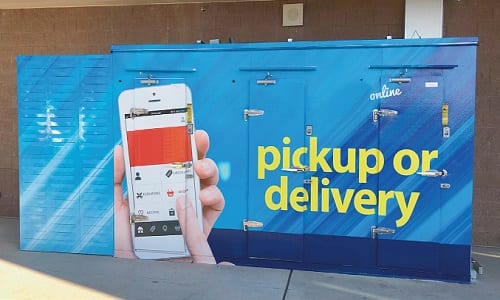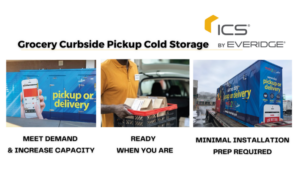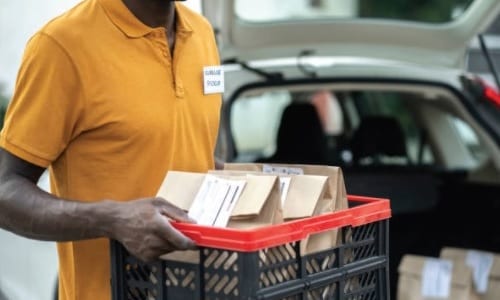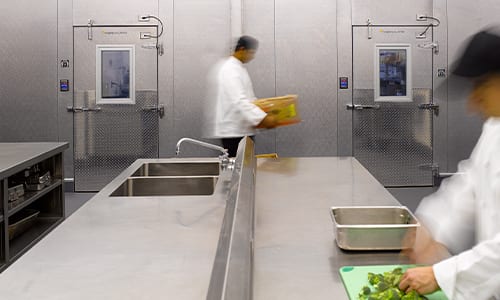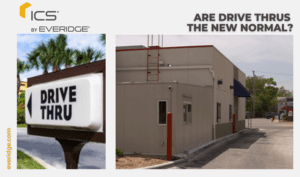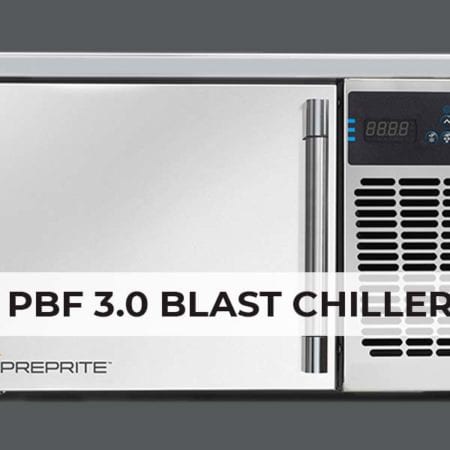How Grocery Retailers Are Designing Cold Storage For Curbside Pickup

- October 23, 2020
With COVID-19 and the rapidly changing buying habits of consumers, grocery retails are increasingly offering services for curbside pickup and delivery. A common challenge for the existing grocery retail brick and mortar facilities is how to repurpose facilities that were not designed for curbside pickup or delivery, as what is becoming business essential. The common constraints for curbside pickup are space and customer flow.
Space: Freeing up retail floor space for additional merchandise. Having sold merchandise taking up retail space, preventing sales opportunities.
Customer Flow: Provide the most convenient and safest method for customers to pick up groceries and non-perishables.
Options with Pros/Cons:
- Leverage Existing Back of House Walk-In Cooler/Freeer to Store Orders
- Pro: Minimal or no investment, short-term fix to provide a stop-gap.
- Con: High overhead and inefficient order flow for customer wait time and labor.
- Self-Contained Reach-In’s at Front of House
- Pro: Convenient storage at front of store for ease of pickup.
- Con: Too large of a retail floor space usage. Requires multiple electrical connections and heat inside enclosure.
- Custom Reach-in Walk-in’s at Front of House with Glass Doors
- Pro: ~30% more cold storage per retail floor sq. footage.
- Con: Custom product so less flexibility for change.
- One-Piece Outdoor Walk-in
- Pros: No impact to in-store retail space. Existing locations were well equipped to handle 20’x10’x8’ outdoors. Optimal customer flow with outdoor storage. Single point electrical connection vs. i.e for 3 for reach-ins. Arrives pre-built for <2-hour install for minimal/no impact to operations.
- Con: Cost is ~30% more vs. reach-in’s proposal.
- Build out Curbside Receiving Area
- Pros: Most optimal for customer flow, with highest capacity for orders. Incorporates pass- through from store to receiving area for a “store-within-a-store” model.
- Con: More than 500% the cost of self-contained storage. Limited viability depending on
- “Dark Store” Concept
- Pros: Most optimal for delivery-only applications with minimized in-store overhead. Increasing use of automated picking to reduce overhead further.
- Con: Limited to delivery only applications.
Case Study Example:
A 200-store Mid-Atlantic based grocery retiler with an average store size of 50,000 sqft, but ranging from 8,000 to 71,000 sqft. The
solution this retailer selected was the one-piece box by ICS to optimize space, customer flow, utilize cost-savings. This retailer
worked with International Cold Storage (ICS) by Everidge Inc. to customize this one-piece box with custom shelving, sizing, and
vinyl wrapping. As a result, the retailer leveraged their curbside cold storage solution as a promotional tool to drive
customer engagement.
Shown below is the early prototype. The 3-door box provides storage for dry goods, cooler, and freezer. The box arrived preassembled with refrigeration and required a single trade (electrician) to install. The box was operational within 2-hours of
delivery.
Based upon the success of the early prototypes, the retailer will be expanding its operations to 150 of their 200 stores through
their seven-state market area in the Mid-Atlantic.
